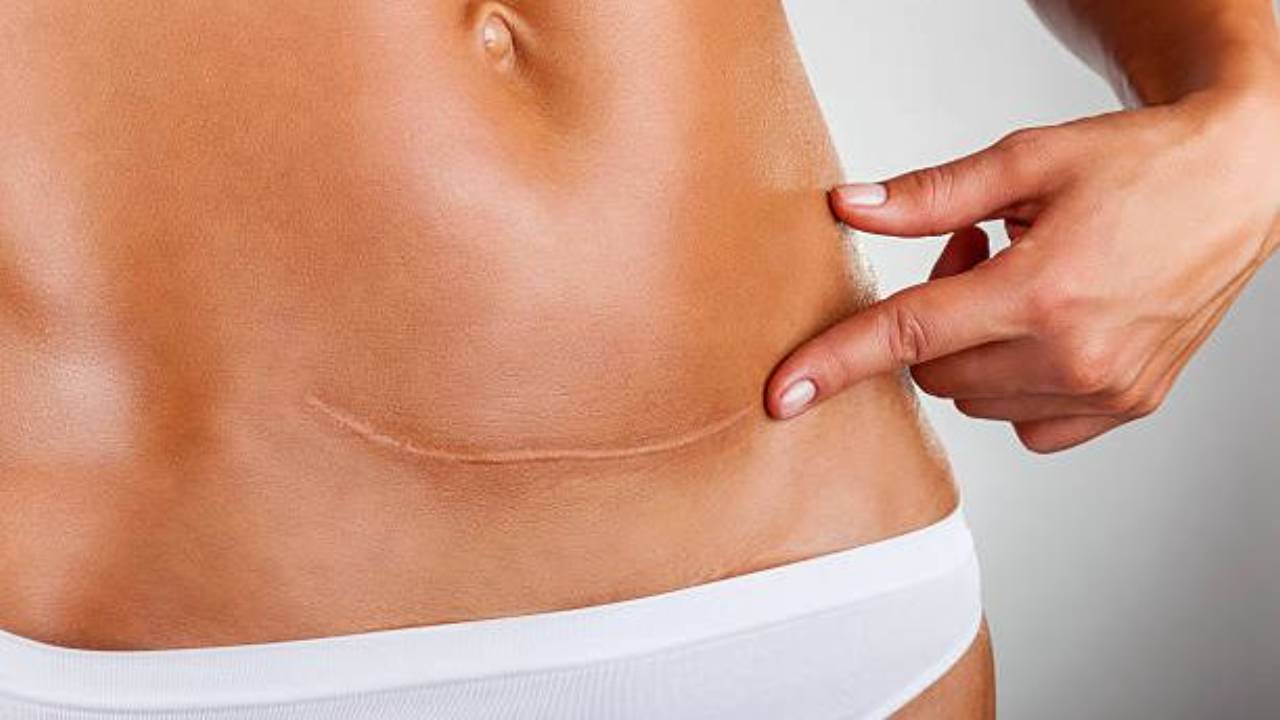C-Section Scar Recovery with Janette Yee
Feb 08, 2023
Many birthing people feel discomfort around their post cesarean section scar. While seeking the guidance of a medical professional or perinatal massage therapist is certainly helpful, there are simple steps you can take for yourself that can go a long way in the healing process, as Janette Yee, athletic and registered massage therapist and founder of Ask Janette, explains! The scar can feel numb for some, or hypersensitive for others - both of which can feel uncomfortable, painful and difficult to grapple with physically, aesthetically and emotionally. But by following these simple steps, you can set yourself on the right path toward recovery.
The Straight Cut.
As Janette puts it, “there really needs to be a lot more care with regards to this crazy sports injury called childbirth”. As a former competitive athlete herself, working with the perinatal population has led her to realize that each birthing person is an athlete, with nine hard-long months of the ‘sport of pregnancy’ culminating in an injury that often doesn’t get its proper due in terms of preparation and rehabilitation - especially for those pregnancies ending in a c-section. A lot of birthing people also aren’t taught to understand what exactly gets cut during a cesarean, and therefore how their scar forms. So what exactly happens? Let’s cut to the chase.
Most commonly, an incision is made horizontally (often called a bikini cut), just above the pubic bone. The skin of the abdomen will be cut, which includes layers of fascia and nerves, as well as the uterus. The stomach muscles do not get cut, but are gently pulled apart to access the uterus. As the scar heals, patients often describe two phenomena: sensitive, numb skin over the area, or what is described as a “C-Section shelf”. What occurs in the latter is that the scar forming in the fascia - the deeper connective tissue found below the skin - fuses with the scar tissue within the skin, causing it to feel tough and immobile. In both cases, here’s how massage can help!
The Piano Keys?
Considering the incision affects not only skin but nerve endings and other tissue, with a desensitizing massage you are trying to decrease the hypersensitivity of the area, or to bring back sensation in the case it is numb. The first thing you want to do is feel comfortable having something contacting the area of the scar. Starting with your fingers, very gently touch or tap the area as though you’re lightly touching the keys of a piano. Tap along the incision, above and below it, or around the entire circumference. Remember this is meant to be superficial, without pushing deeply into the skin.
Once you feel more comfortable receiving sensation, introduce other textures to further awaken the nerve endings. Gently touch the area with a towel, or loofah, or other texture, and really try to observe the difference in sensation. There are no wrong answers! The Piano Keys massage with fingers on bare skin can be started as soon as a few days or a week postpartum, but it is never too late to begin. The other important thing to keep in mind is that doing it with frequency and consistency will lead to better results, even if done for a short period each time. Start with sixty seconds per day and work your way up as you feel more comfortable.
The Small Circles!
Speaking more to the c-section shelf described above, caused by a fusing of different layers of scar tissue, a slightly deeper scar massage can be pursued. With no use of oils, feeling a bit of drag on the skin, massage in small circles encouraging the several layers of skin, the fat and omnipresent fascia to begin to glide on each other. As you follow this circular pattern, clockwise or counterclockwise, you may find certain areas get a little stuck. Maybe your O becomes a D in one area? Essentially you are feeling for two things: a) what does the pain/sensitivity feel like and b) how does the skin move? Much like going to a therapist, tracking those two measures will help you learn which areas you should focus on, and gradually you should feel improvement!
Note: The actual incision on the fascia, which is below the subcutaneous fat and below the skin, is about an entire inch higher from the skin incision that you can see with your eyes. Additionally, one inch above that and usually to the right side (unless your surgeon is left-handed!), you may feel a pinpoint pain. This is because that is where a corner stitch is placed to anchor and tie the incision extra firmly. Make sure to give this area a bit of special attention.
Tune in to today’s episode for more essential details from Janette Yee and Dr. Alicia on tackling your c-section scar recovery, and be sure to check out the FREE resources below, as well as some of Janette’s courses if you’d like a bit more guidance in your recovery!
FREE Resources:
- Cesarean Birth: 10 Things Your Doctor Wants you to Know
- C-section Shelf: Causes, and what to do about it
- Safety First: 3 Cesarean Scar Massage Principles
- Follow Janette Yee on Instagram and TikTok: @askjanette
- Check out Janette’s many affordable course offerings below!
Don't miss a word!
New topics, stories, and information delivered to your inbox weekly.
Sign-up to receive our podcast and blog posts delivered to you directly via email!
We hate SPAM. We will never sell your information, for any reason.


